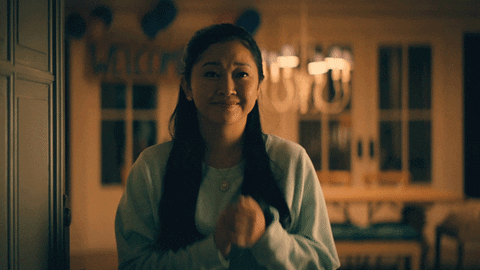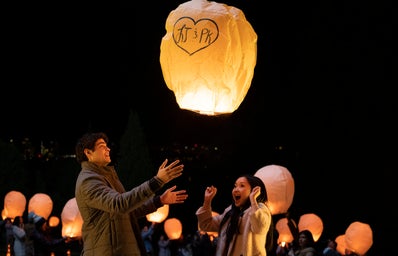As an undergraduate student studying film, television and media with goals of working in the film and television industry in the near future, I am extremely critical of how program creators go about developing characters of color and how their identities are being portrayed on screen. I can go on and on for hours talking about the terrible decisions the entertainment industry continues to make when “diversifying” its movies and TV shows. There is a big difference between diversity and representation. An example of diversity can be seen as when a film portrays a character of color. However, it does not mean the character will be properly represented if the character is still written by a white writer, perpetuating negative stereotypes and/or solely existing to support the white protagonist. Representation is when the character is written by a writer of color or someone who can speak for the character’s experiences (such as their religious identity). The character should also have a complex personality and storyline that does not revolve around a white character.

The montage of Lara Jean and her family going to South Korea had so much potential in setting the scene, but the soundtrack of K-pop songs ruined it for me. It just came out of nowhere. K-pop songs were never part of the soundtracks from the two previous films, so why is it suddenly featured in the third film? I’m not mad about the decision, but I feel like it’s a bit forced. I’m also wondering why K-pop songs are only played in the film when she is in Korea – why can’t she be seen listening to it when she is in the U.S?
When the Covey family said “kimchi” when they were taking a photo, my mouth literally dropped. I could not believe I just watched a scene like this. Do people think that Asians or Asian Americans do this? Why were the Covey sisters doing the most stereotypical activities in South Korea, such as going to a skin-care or beauty store? Couldn’t she find other souvenirs to give her boyfriend other than face masks? Finally, why would they travel all across the world to eat ice cream? They can get that anywhere. I have so many questions and concerns about the lack of cultural depth in the film.

There was a short scene in the movie where Lara Jean shares her experience with what it is like to be an Asian American to her boyfriend Peter, but there was no depth. I would have loved to see how the experiences of being biracial affected the character. The scene had so much potential, but then again, if the film were created by white people, they wouldn’t be successful with portraying a story about the Asian American experience. I believe the executive producers decided to completely ignore Lara Jean’s Asian American background so that non-Asian American viewers would relate to her character. The film should be for the Asian American community first, then for everyone else because it is a privilege to hear our stories. I am aware that the industry really only cares about money and making a profit, but if they are going to bring more diversity into the YA film adaption space, I would like them to do it right. Crazy Rich Asians was a successful film because Asian American writers, producers and a director actively worked on the project behind the scenes. Representation behind the scenes is as important as the actors.
Also, Lara Jean would often be portrayed as the model minority. She is constantly encouraged by her white friends to “rebel” and “break the rules” because she is always polite, law-abiding and focused on school. In the books, she is very introverted, but that does not mean she is shy. I find it annoying that many Asian American characters are still portrayed like this, similar to the “nerdy” or “submissive” characteristics. It’s racist and outdated. Read more about the model minority myth here: https://www.learningforjustice.org/magazine/what-is-the-model-minority-myth.
Many Asian Americans, including myself, also do not relate to Lara Jean because she upholds many upper-class privileges. I know that not all Asian Americans have to relate to her life because our experiences are not a monolith, but the story seems to be out of touch with most Asian American experiences. High school students worry about how they will pay for college; not if they will be able to go to college with their high school sweetheart. Lara Jean spends the majority of the films romanticizing and obsessing over her relationship with her boyfriend. She lives in an enormous house, drives a brand new Subaru Outback, and is not seen participating in extracurriculars such as club involvements or a part-time job. How did she get into UC Berkeley and New York University by just getting good grades?

To end the article, I want to mention that I am pretty tired of Hollywood’s obsession with pairing Asian American women characters with white male love interests. This continues to perpetuate the idea that Asian American women are only interested in dating white men. Why can’t there be a representation of Asian Americans or other men of color as their love interest? There is a long history of desexualization of Asian men in the media, which remains Eurocentric. There is a great article about this issue, which you can read here: https://www.theguardian.com/us-news/2020/oct/23/asian-american-masculinity-white-male-insecurity.
I hope you enjoyed reading my analysis of the film. Like I said before, the books are a lot different than the movies, so I highly recommend you read them to compare and contrast. I have nothing against the people who worked on the film. I am just providing criticism because, as an Asian American viewer, I want quality representation. I really enjoy Jenny Han’s work and I’m excited to see what she does next. I am looking forward to the adaption of her young adult trilogy, The Summer I Turned Pretty, which is currently in the works at Amazon Studios. Thank you for reading!


